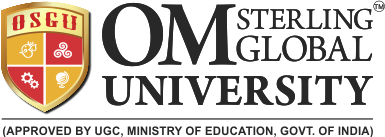Technology plays a crucial role in modern healthcare, particularly in medical imaging. As advancements in technology continue to revolutionize the field, educational programs such as the B. Voc in Medical Imaging Technology must adapt to prepare students for the evolving landscape. This article explores how technology impacts medical imaging studies in a B. Voc program, with a focus on the Medical Imaging Technology Vocational Course and comparisons to traditional BSc programs, including offerings from institutions like OSGU vocational.
Integration of Advanced Imaging Equipment
One of the most significant impacts of technology on medical imaging studies is the integration of advanced imaging equipment into the curriculum. Students in a B. Voc in Medical Imaging Technology program are trained on state-of-the-art machines such as MRI scanners, CT scanners, and digital X-ray systems. These tools are essential for accurate diagnostics and treatment planning in modern healthcare.
The hands-on experience with these advanced machines allows students to become proficient in their use, making them valuable assets to any healthcare facility. This practical training is a key differentiator from traditional BSc medical imaging technology programs, which may focus more on theoretical knowledge.
Real-World Applications and Practical Training
A hallmark of the B. Voc in Medical Imaging Technology is its emphasis on practical, real-world applications. The Medical Imaging Technology Vocational Course is designed to provide extensive hands-on training, ensuring that students are job-ready upon graduation. This approach is particularly beneficial in a field where the ability to operate complex imaging equipment is crucial.
Programs offered by OSGU vocational and similar institutions include internships and practical sessions in clinical settings. This exposure to real-world scenarios helps students understand the workflow in medical imaging departments, from patient preparation to image acquisition and interpretation. Such practical experience is invaluable, as it bridges the gap between classroom learning and professional practice.
Enhanced Diagnostic Capabilities
The advancement of technology in medical imaging has significantly enhanced diagnostic capabilities. In a B. Voc program, students learn to utilize advanced software and imaging techniques that improve the accuracy and efficiency of diagnoses. For example, technologies like 3D imaging and computer-aided detection (CAD) systems are now integral parts of the curriculum.
These technologies allow for more detailed and precise imaging, which is crucial for identifying and diagnosing various medical conditions. By mastering these advanced tools, students can contribute to more effective patient care and better clinical outcomes.
Comparisons to Traditional BSc Programs
While both B. Voc and BSc programs in medical imaging technology aim to produce competent professionals, their approaches differ significantly. Traditional BSc programs often emphasize theoretical knowledge and research, providing a strong foundation in the principles of medical imaging.
In contrast, the B. Voc in Medical Imaging Technology prioritizes practical skills and industry readiness. The vocational nature of the program means that students spend more time in clinical settings, working directly with imaging equipment and patients. This hands-on approach ensures that graduates are not only knowledgeable but also proficient in the practical aspects of medical imaging.
Technological Literacy and Continuous Learning
As technology in medical imaging continues to evolve, so must the educational programs that prepare students for careers in this field. A B. Voc program focuses on technological literacy, ensuring that students are familiar with the latest advancements and trends. This continuous learning aspect is vital, as it prepares students to adapt to new technologies throughout their careers.
OSGU vocational and similar institutions emphasize the importance of staying updated with technological advancements. Courses are regularly updated to include the latest developments, and students are encouraged to pursue further education and training to keep their skills current.
Read Also: How Can a Health Care Nutrition Program Enhance Your Well-being?
Role of Software in Medical Imaging
In addition to advanced hardware, software plays a critical role in modern medical imaging. B. Voc programs incorporate training on various software applications used for image processing, analysis, and management. Students learn to work with PACS (Picture Archiving and Communication Systems), DICOM (Digital Imaging and Communications in Medicine) standards, and other essential tools.
These software applications streamline the workflow in medical imaging departments, allowing for efficient storage, retrieval, and sharing of images. Proficiency in these technologies enhances students' employability and prepares them for the demands of modern healthcare environments.
Impact on Patient Care
Ultimately, the goal of any medical imaging program is to improve patient care. The integration of advanced technology in B. Voc programs ensures that students are well-equipped to provide high-quality imaging services. By learning to use the latest equipment and software, students can produce clearer, more accurate images, leading to better diagnoses and treatment plans.
Moreover, the emphasis on practical training means that graduates are comfortable working in clinical settings, interacting with patients, and performing imaging procedures with precision and care. This comprehensive training ensures that patients receive the best possible care, with accurate and timely diagnostic imaging.
Conclusion
Technology has a profound impact on medical imaging studies, particularly in B. Voc programs like the B. Voc in Medical Imaging Technology. The integration of advanced imaging equipment, emphasis on practical training, and focus on real-world applications prepare students for successful careers in the field. Compared to traditional BSc programs, the vocational approach provides a more hands-on, industry-relevant education.
Institutions like OSGU Vocational play a crucial role in delivering these cutting-edge programs, ensuring that graduates are proficient in the latest technologies and ready to contribute to modern healthcare. By staying updated with technological advancements and emphasizing continuous learning, these programs prepare students for a dynamic and ever-evolving industry, ultimately enhancing patient care and clinical outcomes.

